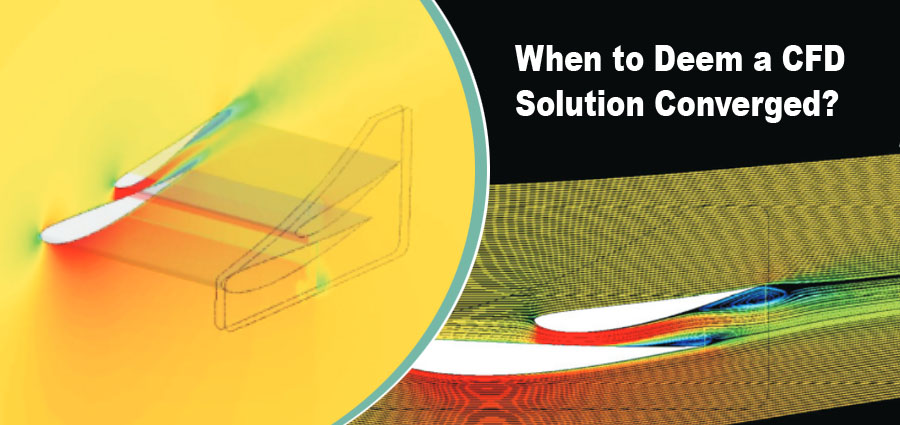When to Deem a CFD Solution Converged?
Posted by: Mehul Patel | Posted on: September 19th, 2016

Solving a fluid flow problem for a product design through CFD has been profound within the engineering community. However, the Navier-Stokes equations that are solved for a fluid flow problem require imposing restrictive conditions, in order to get an analytical solution. This means that CFD analysis is iterative in nature, and there is always a question of knowing when the solution can be considered as a converged solution. While the decision of considering a solution converged is mainly based on the analyst judgment, it is also important to have a clear understanding on knowing when the solution has reached its final state. To know this, CFD specialists utilize three major criteria, i.e. residual values, imbalances in solution and quantities of interest. Let’s look at each of them in detail.
Residual Values
Residual values are an important to determine the solution’s convergence, since it provides information on errors present in the solution. Residuals are nothing but the local imbalance of a conserved variable in each finite volume or cell. However, due to iterative solution, residual values will never be zero. But, the accuracy of the solution can be considered good, if the residual values are lower and do not fluctuate. In most cases, residual levels of 1e-4 are considered to be converged, but not tightly, 1e-5 as well converged and 1e-6 as tightly converged. However, for complex problems, it is not possible to achieve 1e-6 or even 1e-5 in many cases.
Imbalances in Solution
CFD analysis solves conservation equations like mass, momentum, energy, etc., which must be conserved in the final solution obtained. Similar to residuals, solution imbalances will never reach zero, but are required to be small enough to consider the solution as converged. However, more sensitive applications require even tighter convergence. There maybe even cases where imbalances are larger even with small residuals. This is specially the case with conjugate heat transfer (CHT) problems.
Quantities of Interest
To deem a solution converged, it is also important to check that the solution fields do not fluctuate with each iteration. This can be done by monitoring quantities of interest like temperature, drag force or pressure drop. There might be instances where one quantity may have reached to its final point, yet the other still shows signs of fluctuations. Thus, considering this point as the final solution can be misleading. It is better to iterate to the point where values flatten out, in order to consider the solution converged.
Conclusion
Apart from these 3 critical criteria, there are many other factors to consider before deeming a solution converged. It is important to know that numerical accuracy of the solution does not mean that it will truly represent the physical behavior of the product design under investigation. Also, the converged solution can also be misleading if proper boundary conditions are not defined. The need is then to properly check the geometry, mesh quality and boundary conditions as well as solver settings first, and later try for the solution to converge for it to become meaningful.

About Author: Mehul Patel specializes in handling CFD projects for Automobile, Aerospace, Oil and Gas and building HVAC sectors. He works as a CFD consultant with Hi-Tech CFD for the past 5 years and has successfully executed numerous CFD projects of high complexities. He is an expert in turbo-machinery, gas dynamics, Combustion, Fluid Dynamics, multiphase flow analysis, computational fluid dynamics etc.
